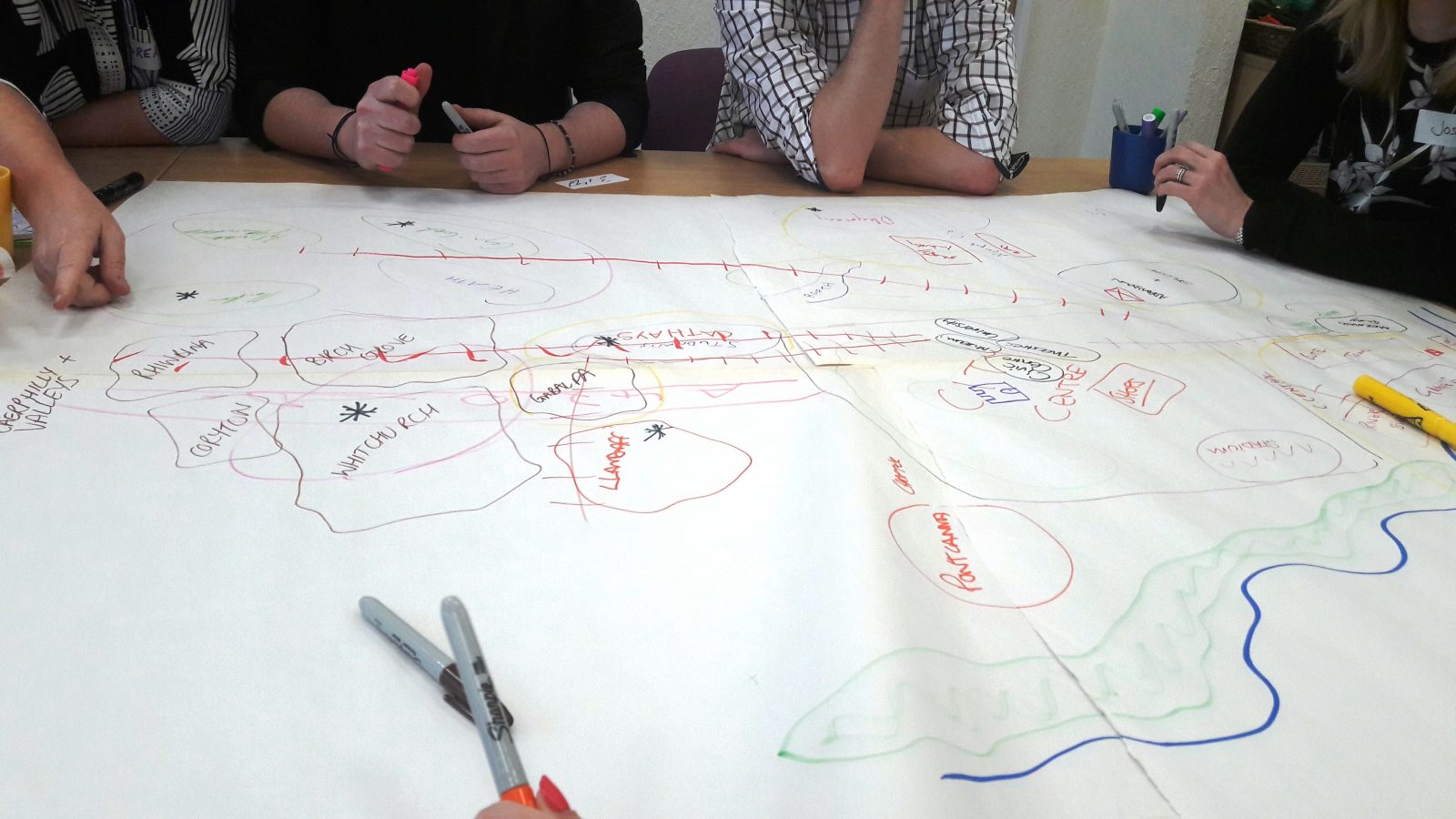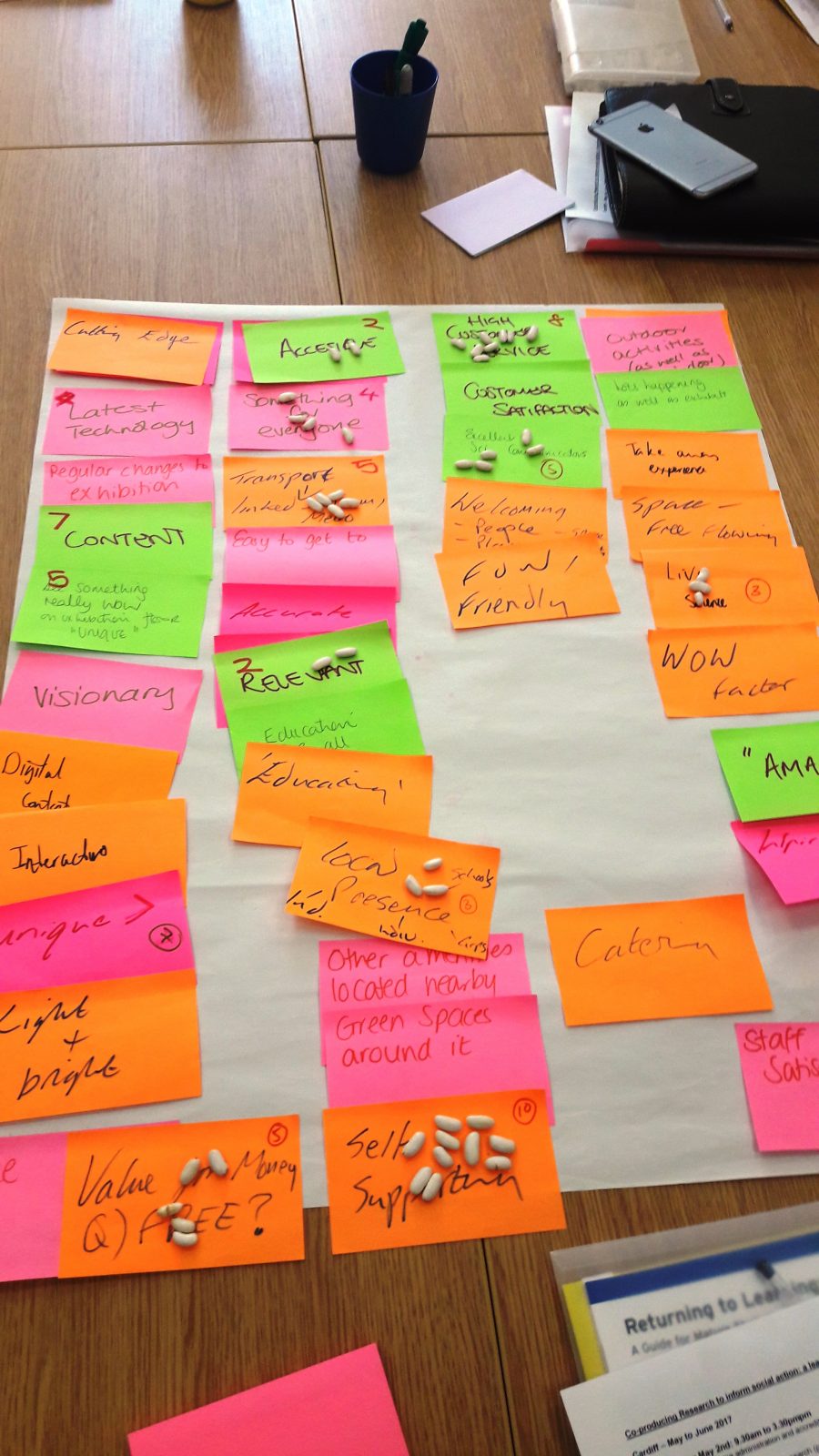By Joss Spittle, Customer Service Officer
Prior to starting the Participatory Research project at Techniquest I had been involved in some Focus Groups with teachers which essentially involved sitting around a table and talking — I soon realised I had very little knowledge of the types of research available.

On day one I learnt that Participatory Research is a group of people working together on an issue that is of importance to them with a view to effecting social change. There should be a two way conversation with the researcher and a feeling of ownership for all participants that the research has been co-produced by the group and all contributions are valued.
The main phases for this type of research are; identifying an issue, collecting then organising and interpreting the data followed by taking action. This process should also be iterative in order that the research can be continually updated.
Triangulation is also an important part of this research process. This is where you undertake the same research process with different groups of people and analyse the data to see if there is any common agreement that would indicate validation for change.
Before undertaking any research it is very important to consider ethics. The research must be done in a right and fair way. It must be systematic and it must be done safely without causing harm to anyone. Issues such as: inclusion — listening to everyone and addressing everyone equally; respect — respecting all views even if opposed to your own; confidentiality — keeping personal information private.
With Participatory Research it is essential to have at least two researchers and nominate one as a Facilitator and one as a Scribe. The Scribe can listen carefully to participants’ conversations and make notes as it is often when people are discussing their opinions and choices that they express the reasons behind their views. This is just the kind of information that the researcher is hoping to uncover and must therefore not be missed.
So, now I knew a lot more about Participatory Research, it was time to try out some of the techniques. No longer was it a case of just sitting around and talking! The methods on offer included the following:
Mapping
A technique called Mapping can be used in the first stage where participants draw a map of their local area which can then be used as a basis to ask questions.

Brainstorming with Bean Voting
Participants write down as many thoughts as they have in answer to a specific question. These can then be grouped together under common headings. Prioritising techniques can then be used to rank the ideas in order of preference using bean or dot voting.

Grids and graded scales can also be used for ranking ideas.
Who knew that research could be so colourful and interactive? Interactive and hands-on is something that we Science Centre types are particularly fond of and I really enjoyed my first group research session out in our local community of Riverside. So now I know how much fun it can be discovering what people think I can’t wait for the next one!





